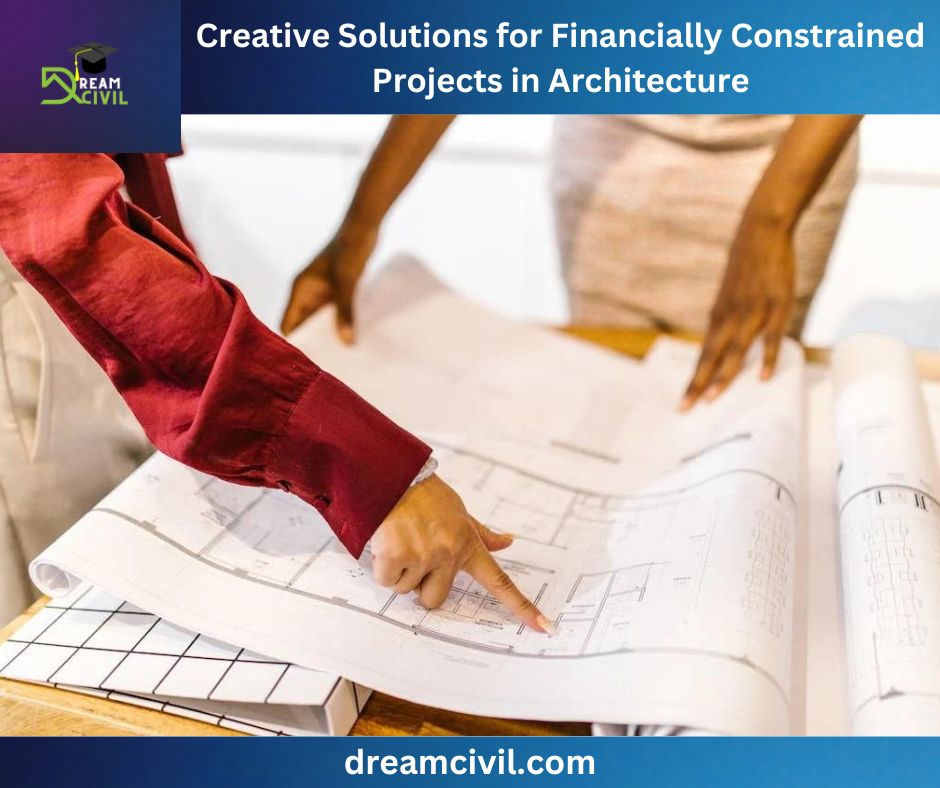Table of Contents
✓ In the world of architecture, projects often come with the challenge of limited financial resources. Designing and constructing a building or space that fulfills the client’s vision while adhering to budget constraints can be daunting.
✓ However, the constraints of a tight budget shouldn’t hinder the creative possibilities within architecture. It is during these challenging times that innovative and resourceful solutions are born.
✓ This article explores the strategies, techniques, and approaches architects and designers employ to overcome budgetary limitations without compromising their projects’ aesthetic appeal, functionality, and sustainability.
Client Financing Options
✓ When faced with financially constrained projects, one viable solution is exploring client financing options. By considering the possibility of clients taking loans, architects can help their clients overcome budget limitations and bring their architectural visions to life.
✓ Clients have various financing options at their disposal. Here are some common avenues to explore:
- Pawn Loans: This short-term financing option is noteworthy for clients seeking immediate funds. Clients can temporarily hand over items such as jewelry, artwork, or electronics and receive a loan based on the appraised value of the collateral.
(Lenders like CreditNinja offer affordable rates and flexible terms for a CreditNinja pawn loan, making them an attractive choice for clients needing quick financial assistance.)
- Traditional Bank Loans: These loans typically involve a structured repayment plan with fixed interest rates, providing clients with the necessary funds to cover project costs.
- Self-Financing: Clients may finance the project by utilizing personal savings or liquidating assets. This option allows clients to have complete control over the funding aspect and eliminates the need to rely on external sources of financing.
- Government Grants and Subsidies: Depending on the nature of the project and its alignment with government initiatives, clients may be eligible for grants and subsidies. These funding opportunities can significantly alleviate financial constraints and enable clients to undertake ambitious architectural endeavors.
Repurposing and Adaptive Reuse
✓ The advantages of repurposing and adaptive reuse extend beyond aesthetics and functionality. Repurposing existing structures is more cost-effective than new construction, as it leverages the existing infrastructure.
✓ By repurposing, architects contribute to sustainability by reducing waste and preserving buildings’ historical and cultural significance. Sustainable design considerations play a crucial role in repurposing projects.
✓ Architects prioritize integrating energy-efficient systems, utilizing renewable materials, and implementing environmentally friendly practices.
By incorporating sustainable elements, architects create greener spaces and respond to the increasing demand for environmentally responsible design solutions.
Innovative Construction Methods
✓ In financially constrained architectural projects, embracing innovative construction methods becomes crucial for optimizing resources, reducing costs, and enhancing project efficiency. Several innovative construction methods have gained prominence in recent years.
✓ One unique method is prefabrication and modular construction. By fabricating building components off-site in controlled environments and assembling them on-site, these methods offer advantages such as shorter construction timelines, reduced material waste, improved quality control, and cost savings.
✓ This approach also allows for greater flexibility in design and customization, making them suitable for various architectural projects. Another technique is 3D printing and robotic construction.
✓ These technologies enable the creation of complex geometries, rapid prototyping, and cost-effective customization. 3D printing offers the potential for faster construction processes, reduced labor costs, and optimized material usage.
✓ On the other hand, mechanical construction introduces automation and precision to various construction tasks. These technologies can revolutionize building design and construction, offering greater efficiency and affordability.
✓ Innovative construction methods emphasize the importance of collaboration and interdisciplinary approaches. Architects, engineers, contractors, and other stakeholders come together to leverage their expertise and develop innovative solutions.
✓ Early collaboration, integrated project delivery, and effective communication foster a synergistic working environment and ensure project objectives are met within budget constraints.
Efficient Space Planning and Optimization
✓ Through thoughtful space planning, architects can maximize the utility of each area and create a harmonious environment. Innovative space-saving techniques play a significant role in efficient space planning.
✓ Architects explore creative solutions to optimize the functionality of compact spaces. And this may involve designing multifunctional rooms, utilizing modular furniture and storage solutions, or implementing space-saving technologies.
✓ Maximizing the use of vertical space is another critical aspect of efficient space planning. Mezzanines, loft spaces, or double-height ceilings add functionality and visual interest and, most importantly, expands the usable area.
✓ Furthermore, taking advantage of natural light and ventilation in their space planning efforts reduces the reliance on artificial lighting and promotes energy efficiency. Strategically positioning windows, skylights, and lights wells creates a pleasant and inviting atmosphere while lowering energy costs.
✓ Similarly, incorporating passive cooling techniques or designing for natural cross-ventilation improves indoor air quality and reduces the need for mechanical cooling.
By employing these strategies, architects can maximize each area’s functionality, aesthetics, and cost-effectiveness, creating harmonious environments that meet the project’s specific needs while staying within budget constraints.
Conclusion
✓ Creative solutions for financially constrained projects in architecture require a combination of resourcefulness, innovation, and strategic thinking.
By thinking outside the box and exploring alternative approaches, architects can overcome budget limitations and deliver successful projects.

